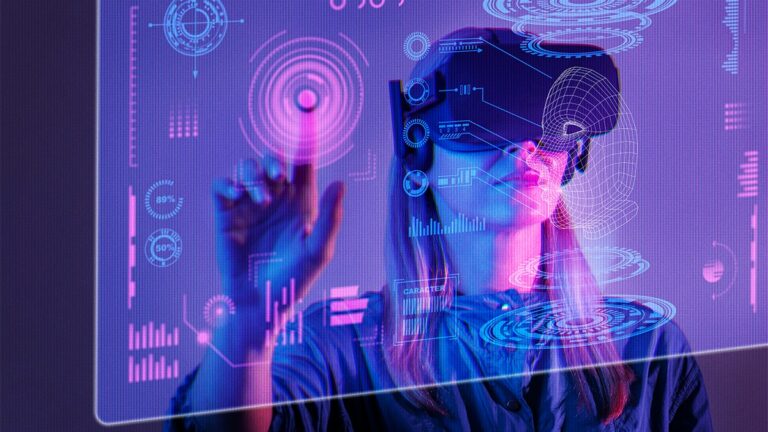AI is not a new technology; it was developed in the 1950s but had only recently gained widespread acceptance in modern business. Despite its relatively recent adoption, the AI trends industry moves rapidly with new waves and trends, making it crucial for businesses to stay updated on the latest developments. This can provide a competitive edge and enhance marketing and advertising performance.
In this context, I will share some emerging AI trends industry that businesses should be aware of heading into 2020.
AI Trends You Should Know About
-
Predictive analytics
utilizes machine learning, historical data, and other processes to forecast future outcomes. With predictive analytics, companies can identify patterns and trends to improve various aspects of their operations, including advertising and security, without relying on a crystal ball.
The use of predictive analytics is growing rapidly in businesses, which is helping them gain an edge over competitors while also increasing their profits.
- Predictive analytics is becoming more accessible due to affordable and user-friendly platforms, making it easier for companies to implement.
- There is abundant data available through various channels and tools, providing businesses with valuable insights to inform their decision-making.
- The market is becoming more saturated, making it crucial for companies to differentiate themselves from their competitors.
- The predictive analytics market is expected to reach $10.95 billion by 2022, with a compound growth rate of 21% since 2016.
Overall, predictive analytics is a lucrative AI trend that businesses should pay attention to if they want to stay ahead of the curve and remain competitive in their industry.
-
High usage of anomaly detection
Anomaly detection is becoming increasingly popular among organizations to prevent problems before they occur. Agencies face daily issues like missed budgets, broken integrations, and forgotten features, all of which can be costly human errors. Anomaly detection uses AI trends to compare current and historical data and identify stand-out datasets, which can help isolate flaws in various business areas, such as cybersecurity, marketing, advertising, and more.
The good news is that anomaly detection can also help uncover beneficial business opportunities. For example, it can identify the most profitable PPC creatives, SEO keywords, or customer segments. Ultimately, it allows agencies to focus on their core competencies while AI trends take care of optimizations in the background.
-
Cybersecurity with machine learning
The use of machine learning in cybersecurity is becoming more prevalent as the risk of cyberattacks continues to grow worldwide. Losing sensitive information or data can devastate any business, especially since cyberattacks on small businesses have increased in recent years. To address this concern, companies are turning to machine learning models to bolster their cybersecurity.
Machine learning tools rely on artificial intelligence to continuously monitor a company’s operations in the background and identify potential threats before they can cause harm. This enables companies to operate smoothly while knowing that their systems are well-protected.
Microsoft’s Windows Defender Advanced Threat Protection (ATP) is an excellent example of such a tool. This software is integrated into Windows 10 devices and uses cloud-based machine learning algorithms to detect threats and misconfigurations that could cause harm. By utilizing machine learning in cybersecurity, businesses can stay one step ahead of potential threats and keep their data secure.
-
User-friendly AI tools
AI platforms have traditionally been difficult to use and adopt due to their complexity and the fact that they are a newer technology. However, this changes as more user-friendly AI software is developed and released. These newer platforms are designed to be easily adopted and present data more straightforwardly, making it easier for users to integrate them with their campaigns and understand the data outputs. As a result, more businesses are implementing AI trends in their operations. With simple interfaces and easy-to-use dashboards, agencies can now take advantage of the benefits of AI trends without feeling intimidated or needing to be experts in machine learning and AI.
-
Maintain a work-life balance
The article discusses how AI technology is not only limited to data processing and machine algorithms; it’s also being increasingly used to improve the human aspect of a business. With the help of AI, businesses can conduct computer-related tasks more efficiently, allowing the human workforce to focus on their areas of expertise.
PwC has estimated that AI technology will contribute $15.7 trillion to the global economy by 2030, primarily through enhancing products, stimulating consumer behavior, and improving labor productivity.
The article cites the example of VMware, a company that struggled to meet its targets and quality standards as it scaled its operations. The company integrated an AI-driven content solution to solve the problem of automated tasks like editing and corrections. The saved time from these tasks was then allocated to training more writers, onboarding new members, and creating better systems, thereby improving work balance.
Conclusion
Artificial intelligence (AI) has been around for many decades, but it has only recently been widely adopted by various businesses and industries worldwide. AI is a game-changer; taking advantage of AI trends can give your company an edge over its competitors and boost productivity.
One of the AI trends to consider using is predictive analytics. With big data and machine learning, companies can make better decisions and predict future solutions. Anomaly detection is another trend that helps companies find opportunities and weak points within the organization to succeed and protect their assets. Additionally, AI is being used in cybersecurity, with machine learning helping to improve threat detection.
As more companies adopt AI, we are seeing real-world examples of how it enhances not only complex operations but also the day-to-day human aspects of running a business.

















